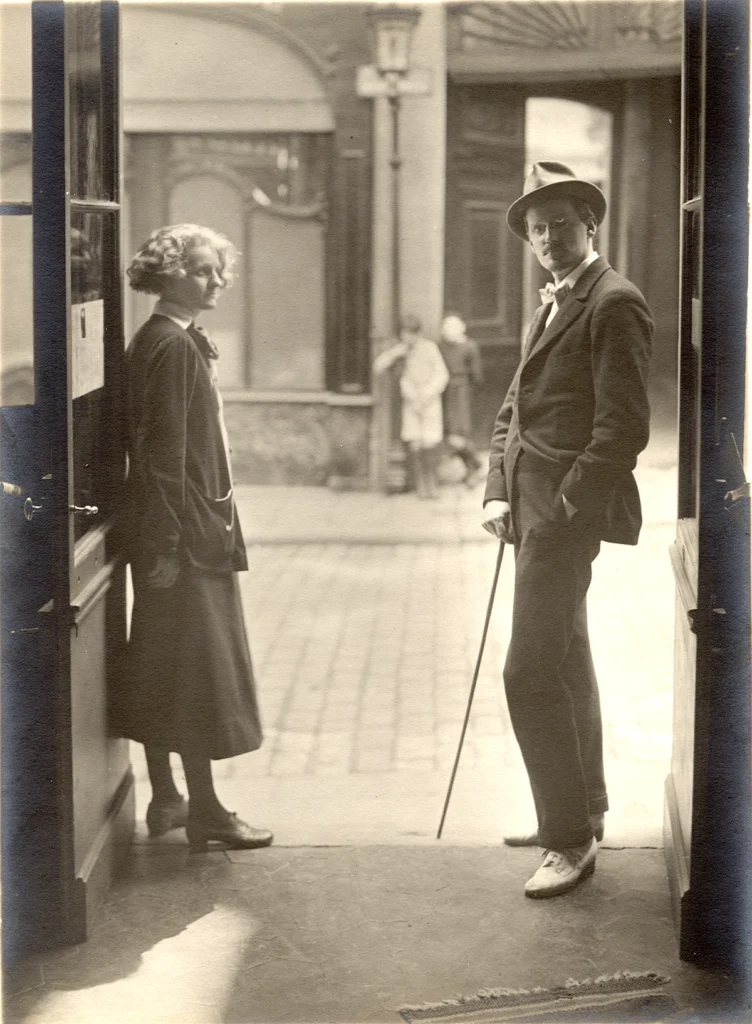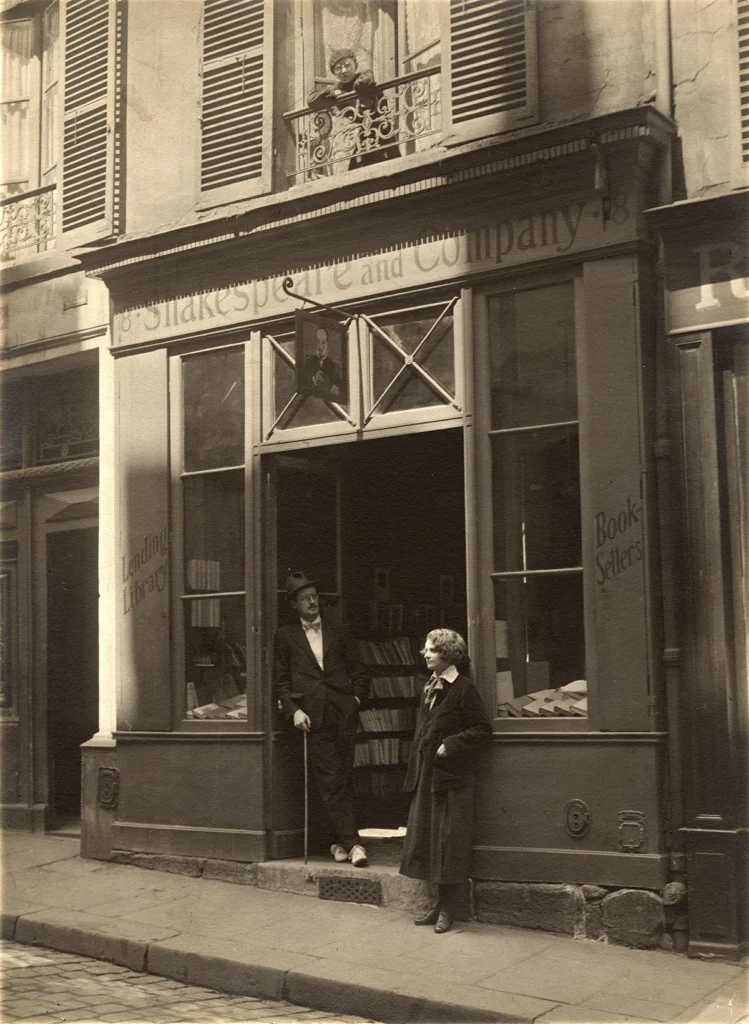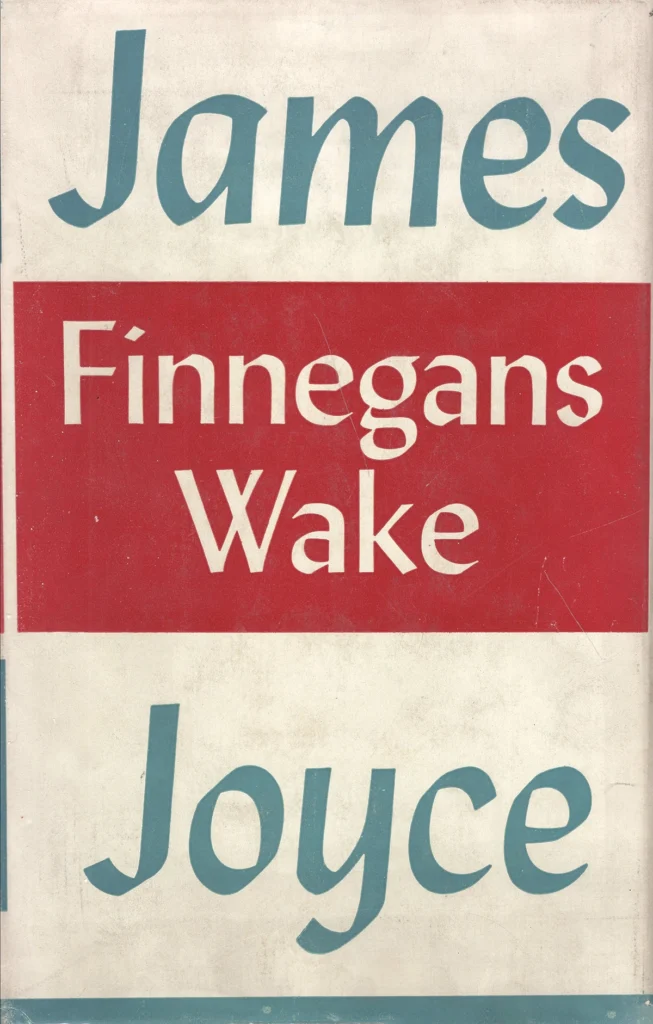Ezra Pound, John Quinn, Ford Madox Ford and James Joyce in Paris in 1923 > Buffalo University (NY) – James Joyce Collection
1920
1921
«De mortuis nil nisi bonum»
“Nothing but good is spoken of the dead” Joyce wrote of Trieste to Ezra Pound in 1920. Now under Italian administration, Trieste had lost its charm, while Paris was the cultural centre of the world. Here Joyce was a major figure, intellectuals admired him – among them Sylvia Beach, owner of ‘Shakespeare and Company’, would publish Ulysses in a volume in 1922 – and supported him financially. With the days of English lessons over, Joyce devoted himself solely to writing and began to conceive an even more innovative text than Ulysses. In March 1923, he wrote to Miss Weaver (his patron): “Yesterday I jotted down two pages […] the first I have written since Ulysses’ Final Yes”: this was the beginning of Finnegans Wake, which he would work on for the next seventeen years.
James Joyce with a conspicuous patch over his left eye > courtesy MOLI, Dublin
1920
1921
«A long … the … riverrun»
Life in Paris was marred by Lucia’s mental illness, for which he held himself partly responsible (“Whatever spark or gift I possess has been transmitted to Lucia and it has kindled a fire in her brain” he told a friend in 1935) and his own increasingly serious health problems, especially with his eyes. These were the years of the rise of fascism and Nazism in Europe. Finnegans Wake was published on 4th May 1939. Joyce died two years later, at 02.15 on 13th January 1941 in Zurich, following complications due to a perforated ulcer. Trieste was far away, but Joyce had brought it with him, and the city spoke to him from the pages of Ulysses and the chaos/cosmos of Finnegans Wake. It can be heard in the screams of the bora that Joyce recreated, in the lure of the prostitutes of Cavana, and in the twisted names of the many Triestini who appear therein.
The rock of Ithaca, and the sails of Ulysses
When he arrived in Trieste, Joyce was twenty-two, the age of Stephen in Ulysses. When he left in 1920 he was twenty-eight, Bloom’s age. He didn’t know that he would never return.
Louis Gillet, a man of letters and faithful friend of Joyce, wrote thus, recalling his Parisian chats with Joyce:
“He liked to remember his happy days and spoke preferably of Trieste. His thoughts lingered on this topic with delight. There for a few years he had enjoyed some moments of respite; fate had spared him some time. This pretty, good-natured Austrian city, half-Slavic and half-Italian (Edmund Gosse termed this “life in Germany”), with the gaiety of the Midi, the medley of languages, the animation of a harbour, and an already exotic, oriental flavour (as Veronese’s Venice), had given him an extreme pleasure: there were no classical monuments, no Roman mementos as in split or Ancona. But there was the rock of Ithaca, and on the sea, the sail of Ulysses”.
[Louis Gillet, The living Joyce, 1979]
- Display Case





